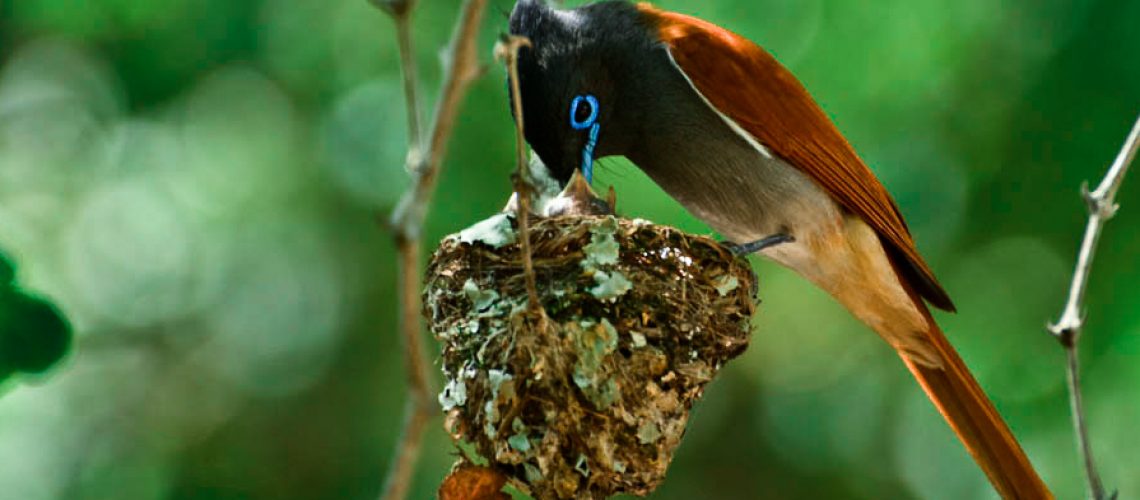As beautiful looking as its name, the African Paradise Flycatcher seems to be more tail than anything else.
The size of their tails belies the size of their body; they are in fact very average-sized birds. What is even more fascinating is that during the mating season, the male African Paradise Flycatcher’s tail can grow to almost twice its length to measure over 30 centimetres! There are several types of Flycatchers in the Southern African region, and the African Paradise Flycatcher is amongst the most-widely distributed of those. It has been spotted in the Sabi game reserve and as far as the Southern-most tip of the Western Cape. As the most attractive of the Flycatchers, these birds are what is known as ‘intra-Africa migrants’, and hence are not common residents of South Africa and rather fly in, out and around Southern Africa.
Their common habitats vary from open forest areas, around rivers, to woodland and savannah and surprisingly, domestic gardens too. Behaviour-wise, these are what are known as passerine birds; in a nutshell, a passerine bird is a perching bird. You may think that all birds are perching birds, and while that is true, it is the Flycatcher’s anatomy which makes it genuinely passerine. Passerine birds are identified by several characteristics: they are small to medium-sized and have an upright posture. They also have bright plumage with both male and female birds being brightly-coloured. Their heads are an opalescent grey, their beaks are bright blue with orange wings and backs. Another characteristic of passerine birds is that they are vocal, and the Flycatcher is no different with birders reportedly hearing the bird long before actually sighting it. What is greatly interesting about the call of the African Paradise Flycatcher is that it seems to change depending on the region.
Anatomically speaking, passerine birds have distinct feet made up of four toes. On the foot, three toes point forward and the last remaining toe points backwards. This specific formation is what allows them to perch comfortably on branches even while sleeping.
African Paradise Flycatchers mate for life and during the courting phase, the male makes the most of his bright plumage by bobbing, dancing and flailing wings and tail in an effort to woo a mate. He will also perch on a branch and open his mouth up as wide as possible to show off the bright colours of his buccal cavity and impress the females. Both the male and female Flycatcher share the responsibility of parenting by building the nest and incubating eggs together. Unfortunately, though, as with many birds, they are at the mercy of brood parasites like Jacobin cuckoos who forcibly remove the flycatcher’s eggs and leave their own eggs behind for the Flycatchers to incubate and feed once hatched.

